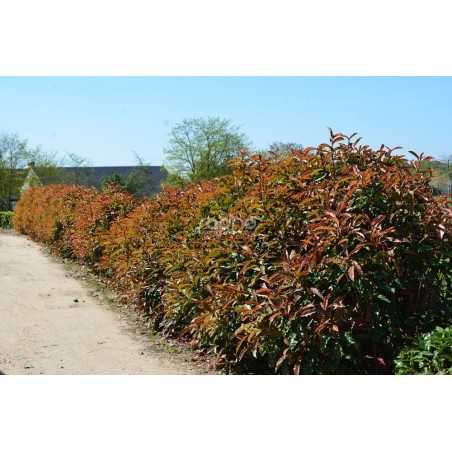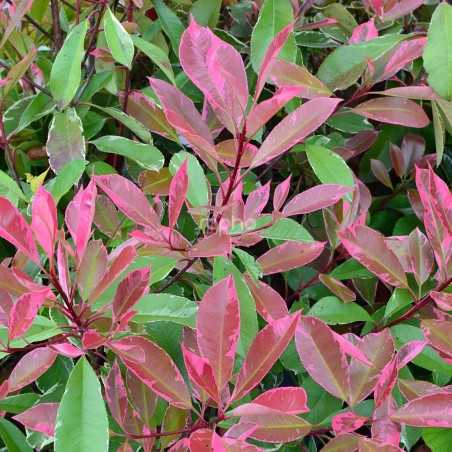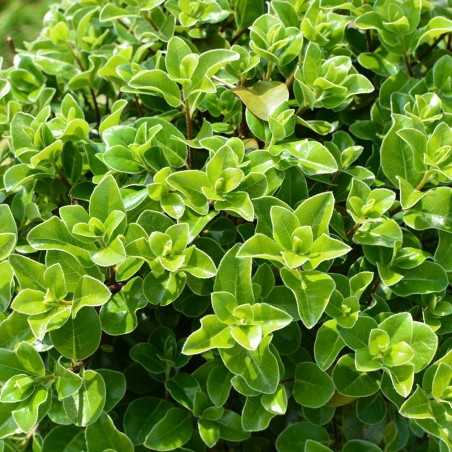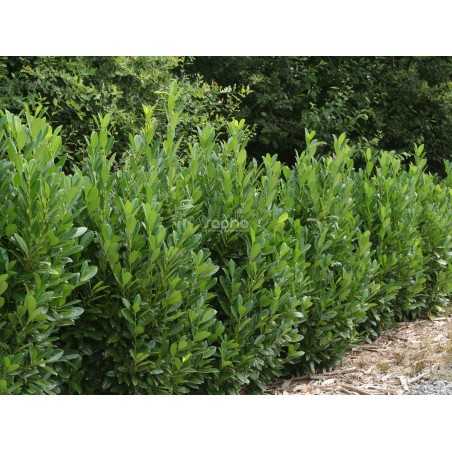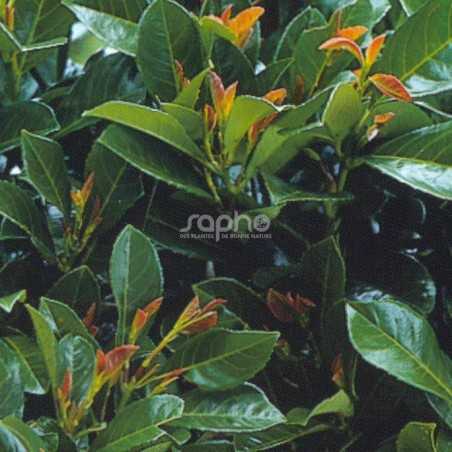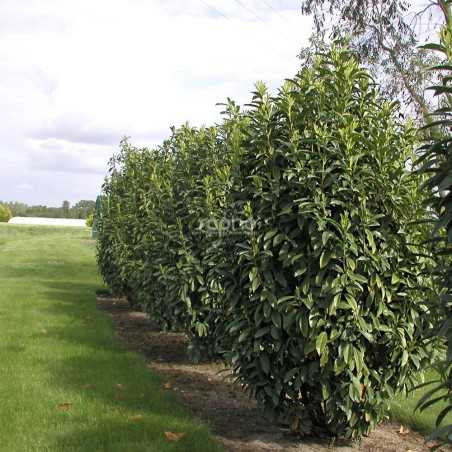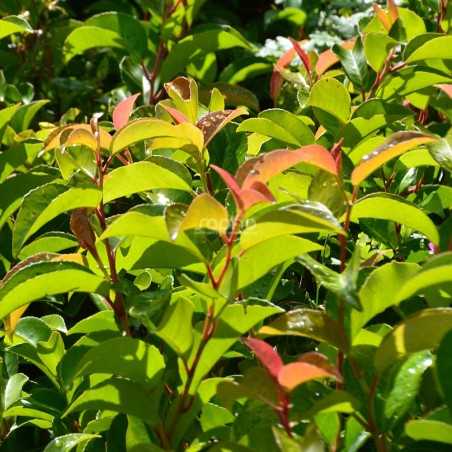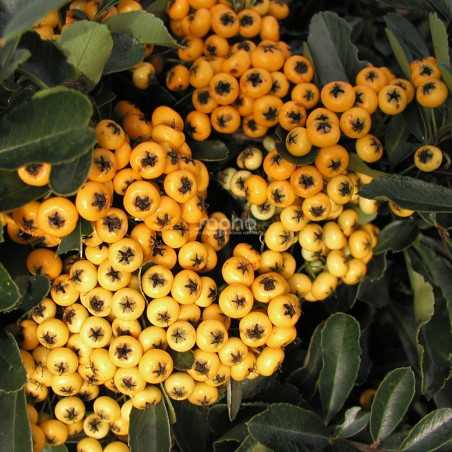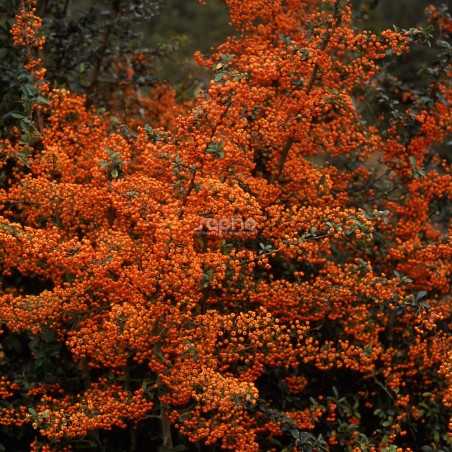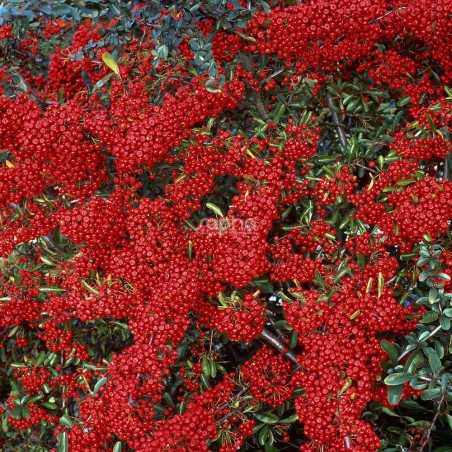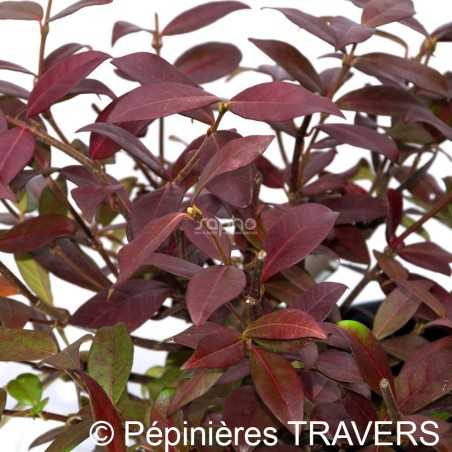Chocolate coloured and toothed leaves : an original foliage with this new Photinia.The originality of the foliage brings a revival to the Photinia. The leaf blade is ondulated and finely toothed. The young shoots, copper at first, take on the unusual chocolate shade, and then turn dark green.This cultivation, tested in nurseries for several years, performs well: it branches and develops well in containers, its growth is good. Hardy, CRUNCHY® keeps its leaves in winter and has a good resistance to powdery mildew. It is therefore recommended for hedges, with or without clipping.Trophies: FIRST PRICE at FLORMAT - MIFLOR 2014 (Padova - ITALY)
Filter By
Foliage
Position
Categories
Menu
All our varieties
Beautifully mixed colours and an upright and regular formIts variegated foliage brings colour throughout the year. Photinia Louise has also been selected for its vigorous, erect growth and its ample vegetation that's regular, compact and dense. Photinia Louise is a shrub with persistent leaves and changing colours. In spring and autumn the young shoots are bright red spotted with pink.The developing leaves become thick and green, spotted wih creamy white. Its flowers, in May, are quite discreet, forming creamy white umbels. Upkeep is easy as it needs little pruning other than that required by the garden. In a hedge, a mixed bed or as a solitary shrub, 2 to 3 m high, Photinia Louise will enliven a garden throughout the year.
Dense and upright, ideal for hedges and topiaries
Irish Luck pittosporum is a dense-growing variety with strong branches and magnificent glossy green foliage contrasting with its dark stems.
Steady-growing, resistant to pests, salt and cold, it is very easy to care for.
It is ideal for planting in the ground, as a hedge, topiary or pot on a terrace or balcony.
A hardy selection with well-branched growth, for a maintenance-free hedge.This variety, coming from a Prunus laurocerasus 'Otto Luyken' seedling, was selected for its rapid growth and its well branched and upright habit, resembling a compact flame.It has few flowers in spring, and therefore only a little fruit afterwards.Rustic evergreen, particularly resistant to disease, not needing pruning, 'Greentorch' is an ideal variety for a monospecific hedge without worries.
Little springtime vulcanos for a low hedge.This variety of laurel with elegant branches naturally reaches a height of about 2 m and a spread of 1.50 m, all the while keeping its compact shape. It is of medium to slow growth.The coppery young shoots are decorative and contrast well with the shiny dark green foliage, which is evergreen.The creamy white flowers in May are followed by deep violet berries.ETNA® tolerates pruning and is recommended for the composition of moderate sized hedges (up to 0.80 m). Mixed with other shrubs, it brings an evergreen touch to beds. It can also be used in containers.Trophies: Gold medal at the Plantarium 1994. (Boskoop - NETHERLANDS)
For a naturally narrow and hardy hedge.This Prunus laurocerasus has been cultivated in Switzerland for its erect and narrow growth. It only needs light pruning.It reaches a height of 3,50 m and a width of 1.00 m when free growing.The foliage is shiny dark green, quite elongated and resists well to low temperatures.GENOLIA® does not thin out at the base and can stand the weight of snow thanks to its erect and strong branches.It has discrete flowers and the fruits are not very abundant.This variety is ideal for a narrow hedge.Trophies: Silver Medal at PLANTARIUM 2005 (Boskoop - NETHERLANDS)
Worth a try: a new evergreenThis new evergreen is an asset for the producer: its growth is vigorous and it forms very well. The young shoots offer a pretty bronze shimmer, later the foliage turns bright light green, which contrasts with the red petioles. In the autumn it turns bronze green.The slightly flared and drooping shape as well as the small and curled leaves give the shrub a light and natural silhouette.Very hardy for a Prunus azorica. Ideal for the revival of hedges!
Yellow fruits for this resistant Pyracantha of the SAPHYR® range.This cultivation has all the characteristics of the SAPHYR® range.SAPHYR® Jaune 'Cadaune', very vigorous, bears, from Mid-October, numerous yellow berries, which last a long time, later turning to yellow-orange.
Hardy Pyracantha of the SAPHYR® range with orange berries.This variety has all the characteristics of the SAPHYR® range.SAPHYR® Orange 'Cadange', fast growing, has a profusion of big bright orange berries from September onwards, lasting the best part of the winter.
Hardy Pyrancantha of the ; SAPHYR® range, with red berries.This variety has all the characteristics of the SAPHYR® range.SAPHYR® Rouge 'Cadange', medium fast growing.From September onwards until December, it bears an abundance of big, shiny, bright red berries finally turning orange at the end of the season.
Perfumed flowers in summer and a superb coral-red foliage in winter
In winter its stems and foliage acquire a pronounced, beautiful and decorative coral-red all through the height of the plant.In addition to its winter colours, Trachelospermum jasminoides Winter Ruby® has other advantages over typical jasmines. Its elegant foliage is livelier and brighter. It resists frost better (as low as -17°C), is more persistent and retains its leaves better which don't dry out in winter.Its generous white flowers bloom slightly earlier (between May and July in full sun, from June to September where it's partly shaded) and are all just as perfumed. It doesn't grow as tall (2 to 3 m) as typical jasmines (up to 5 m or more).For its compact form, its natural branching and abundant flowering, Winter Ruby® is an ideal variety for growing in pots with supports of 40 cm to 1.5 m.

